
Seed saving tips for squash: After the squash is ripe, pick it and allow to set for a month. This lets more sugars migrate to the seeds and ensures viability. Then remove the seeds and lay out on a cookie sheet to air dry, stirring with your hand every day or two to ensure thorough drying. Store in an airtight container.
Note: If you plan on saving seeds from your pumpkins or squash, remember that the different species of the genus will cross. So if you plant a C. pepo pumpkin and a C. pepo squash (often zucchini or summer squash), they will cross. Or if you plant a Hopi Pale Grey squash and your next door neighbor grows Hubbards, they’ll also cross. But you can plant one of each species, C. pepo, C. maxima, C. mixta and C. moschata and still save pure seeds as they will not cross. To raise pure pumpkin or squash seeds, they will often need to be planted a mile from the nearest like species unless you have a thick woods, tall hills or some other physical barrier between the crops.
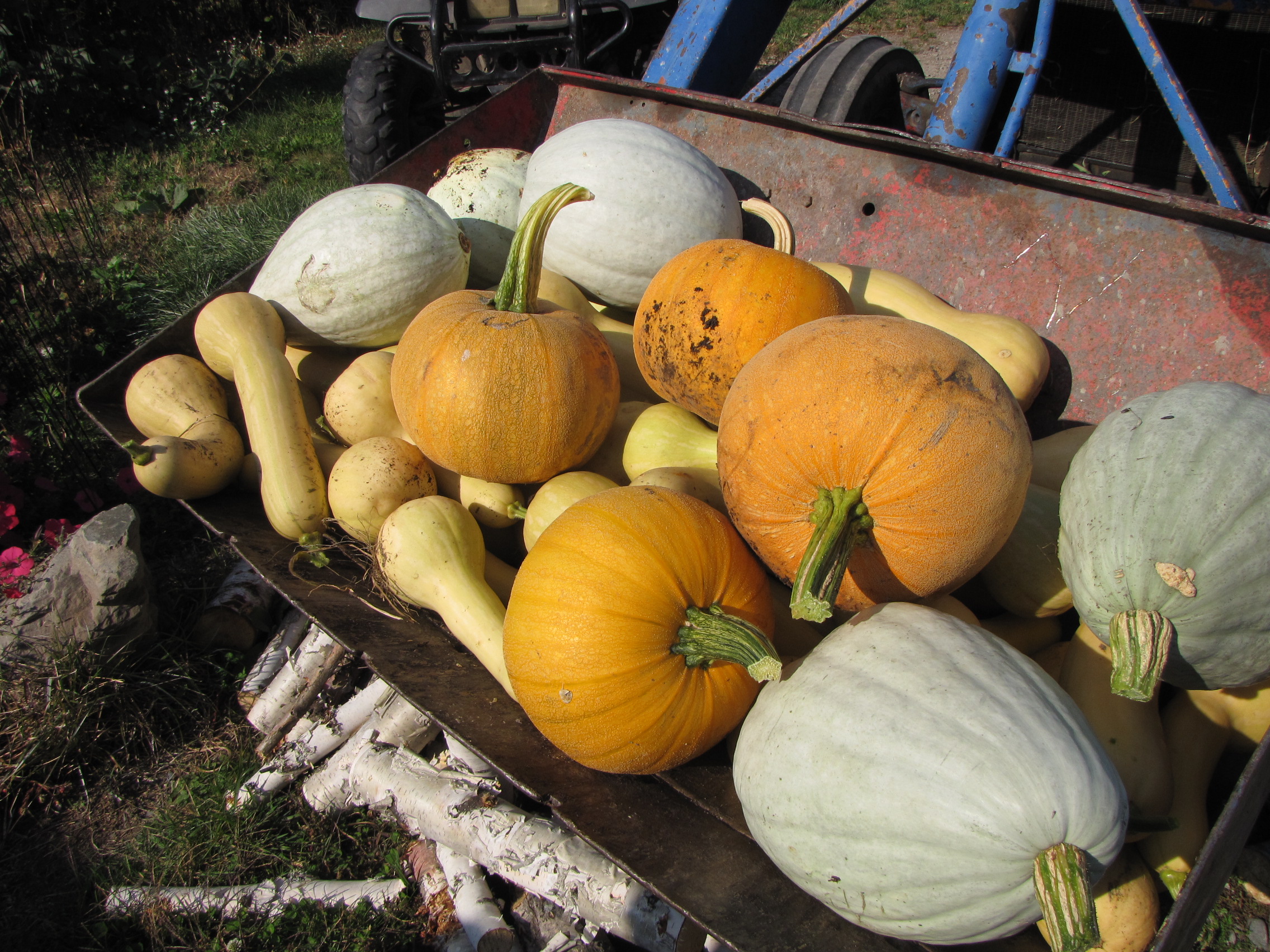
A bucket load of squash and pumpkins; Canada Crookneck, Winter Luxury & Hopi Pale Grey

We love our squash! Every fall and winter, we have a big pile in the living room.
SQUASH Cucurbita maxima about 20 seeds per pack
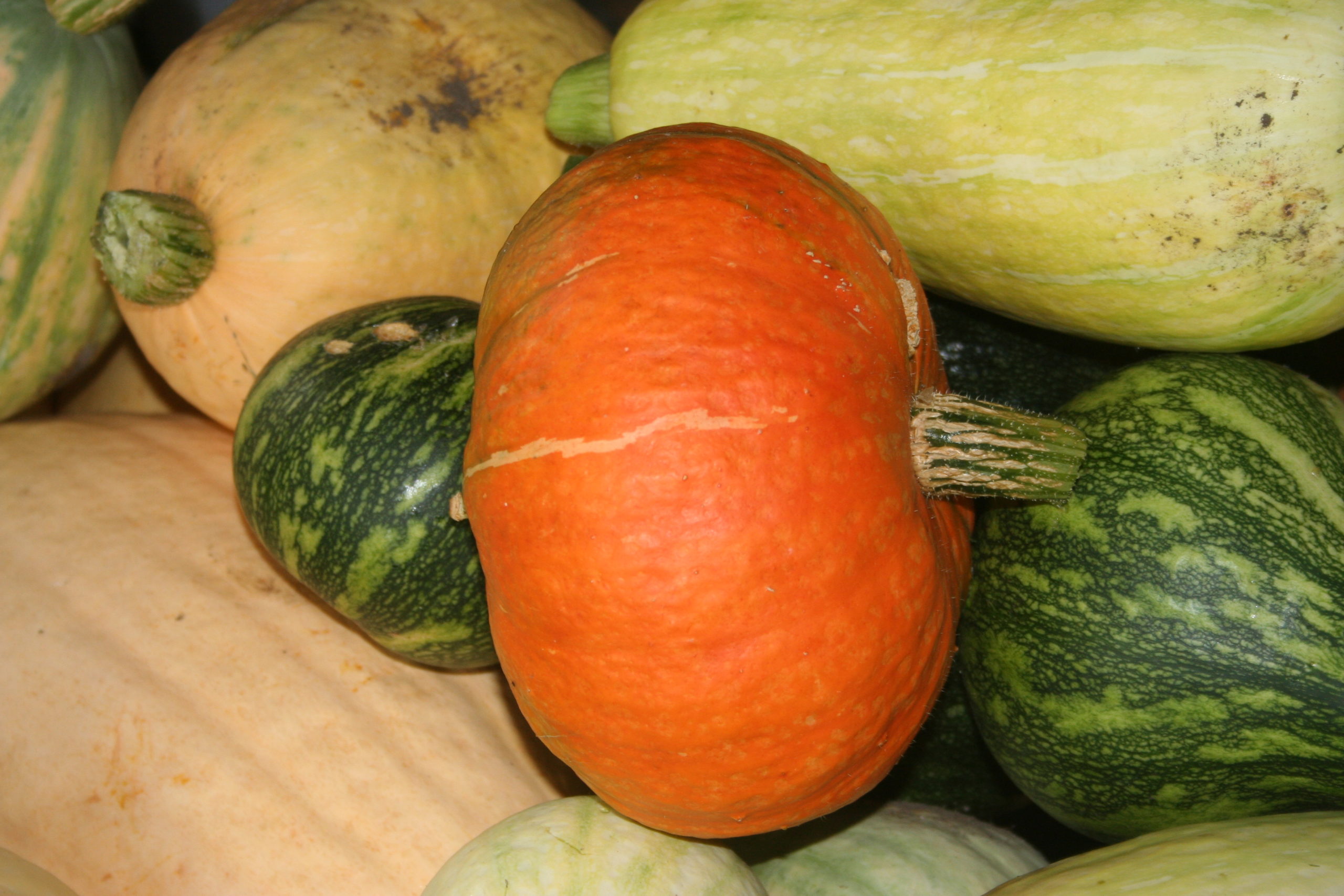
Arnie’s Golden Buttercup
Arnie’s Golden Buttercup A customer sent us a sample of the squash he and his brother developed out of an accidental cross between Turk’s Turban and a regular buttercup. We trialed it last year and found this is a wonder squash! It is hugely productive, beautiful orange and so tasty that the voles ate nearly 100 of them right in the field, only leaving us two to taste ourselves. And save seeds from, of course! Wow are they sweet and velvety smooth too. They are the perfect size for a couple or a small family as they weigh between 3-5 pounds. 100 Days

Borchart’s Wonder We’re kind of picky about our squash. I mean after years of growing Hopi Pale Grey, a new squash has to be pretty great for us to love it. But this year, it happened! A customer gave us seeds for this long, heavy pink squash with a pronounced “belly button” on the blossom end. It’s fatter than a Candy Roaster and the flesh is sumptuous and velvet smooth. Wow!! We’re in love! Ours were about 20 pounds and were very productive and long storing. 100 days
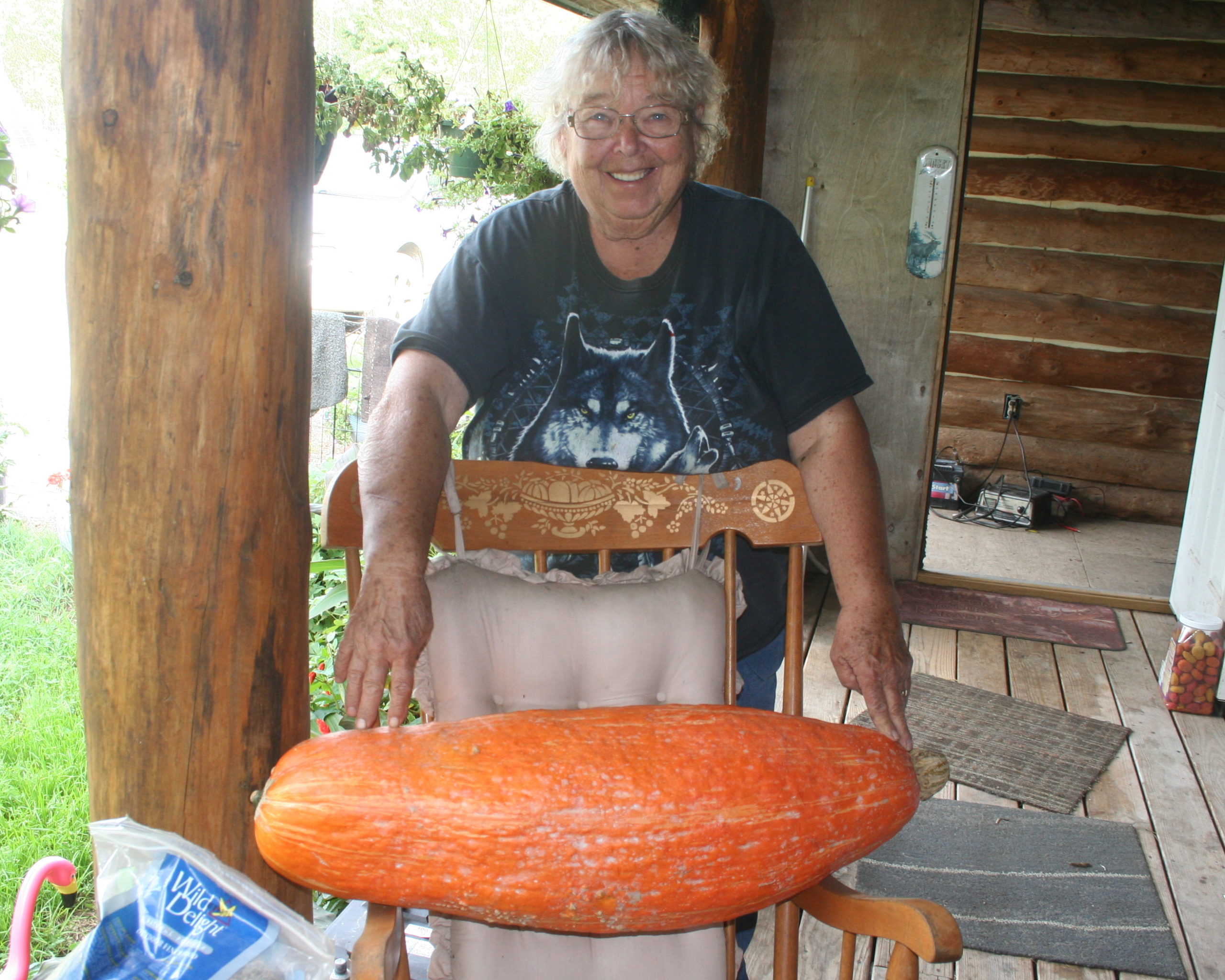
Gete-Okosomin
Gete-Okosomin This huge, often 30 pound banana-shaped, orange squash stunned us with its productivity despite being planted in a new garden during a drought! Grown for thousands of years by the Miami people of Indiana, this sweet, awesome squash will now go on to feed our families too. 100 days
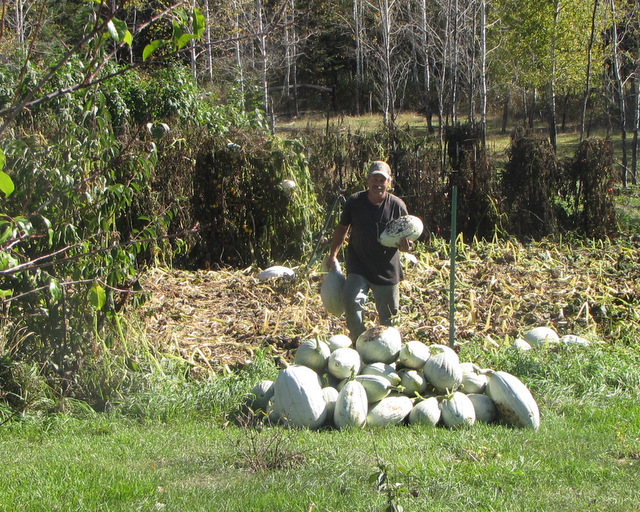
Hopi Pale Grey
Hopi Pale Grey Our very favorite squash that has just recently been saved from near-extinction! Not only is the orange meat tender and very sweet but this hardy squash will store under normal household conditions for over 2 years!!! Talk about your long-term storage foods. And after a year’s storage, the squash will still be juicy and hard…not wilted and half-rotten. Our favorite “pumpkin” pie is made from Hopi Pale Greys! These football shaped large squash have a distinctive “bellybutton” on the blossom end and mature to a pale blue-gray in color. Usually weigh 7-20 pounds. 100 days
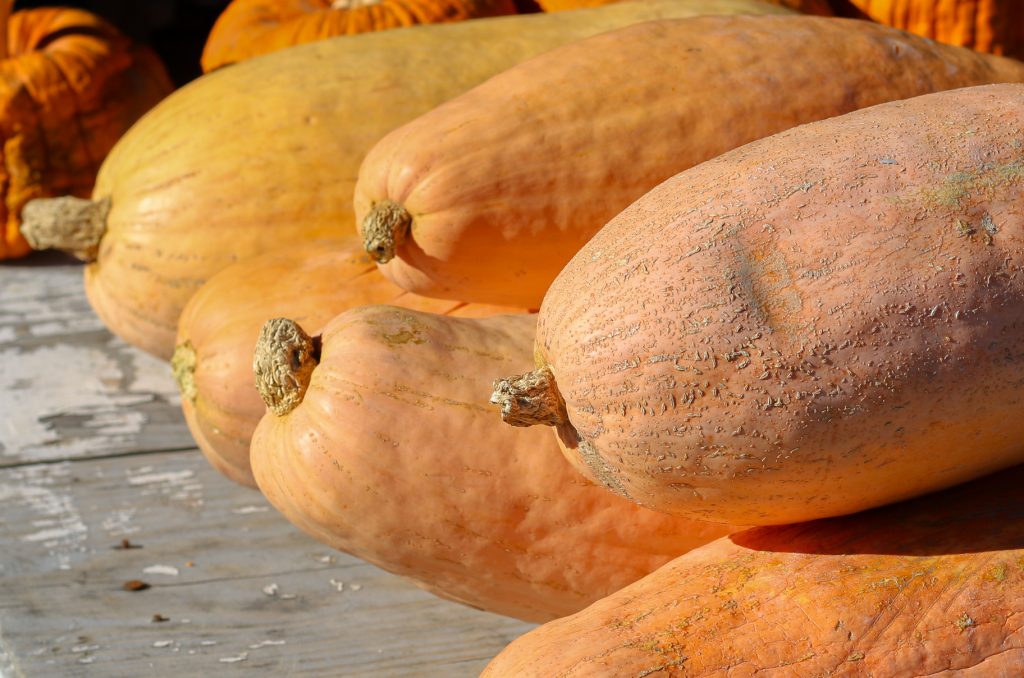
Jumbo Pink Banana
Jumbo Pink Banana Last year we grew this giant version of the banana squash, which I’d grown as a child, back in the ’50’s and loved so much. We sure weren’t disappointed! Talk about lots of huge pink fat banana shaped squash! Some weigh in over 20 pounds. And so very tasty as well. Everyone I gave one to came back with rave reviews. 100 Days

Lakota
Lakota Here’s another very tasty, gorgeous mid sized squash attributed to the Lakota Sioux. It is pear-shaped, a glowing bright red-orange with green flame streaks coming up from the blossom end . Quite productive and has very sweet, orange meat. Everyone here loves it! Much better than acorn squash by far! 5-10 pounds 90 days

Lower Salmon River
Lower Salmon River Grown in the Lower Salmon River region of Idaho for generations, it is adapted to cooler regions. It has deep orange, sweet flesh. Delicious for pies and soup or baked with butter and brown sugar. The salmon pink colored skin is very thick with light mottling. The tough rind helps the fruit store for up to one year under ideal conditions. Quite productive too! Some are pumpkin shaped where others have a turban=shaped “belly button” on the blossom end. 90 Days
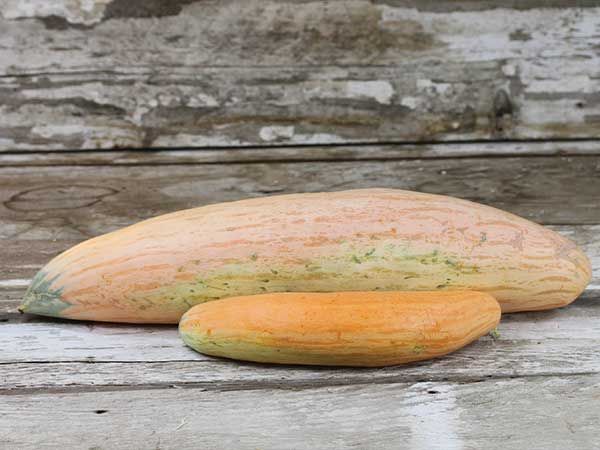
North Georgia Candy Roaster
North Georgia Candy Roaster This is a very old squash, first grown by the Cherokee in the early 1800’s. It is long, beautiful pinkish tan with a blue flame on the blossom end. Having meltingly sweet, orange flesh, it can be used in savory or sweet recipes with equal success. It is also very productive too! 100 Days
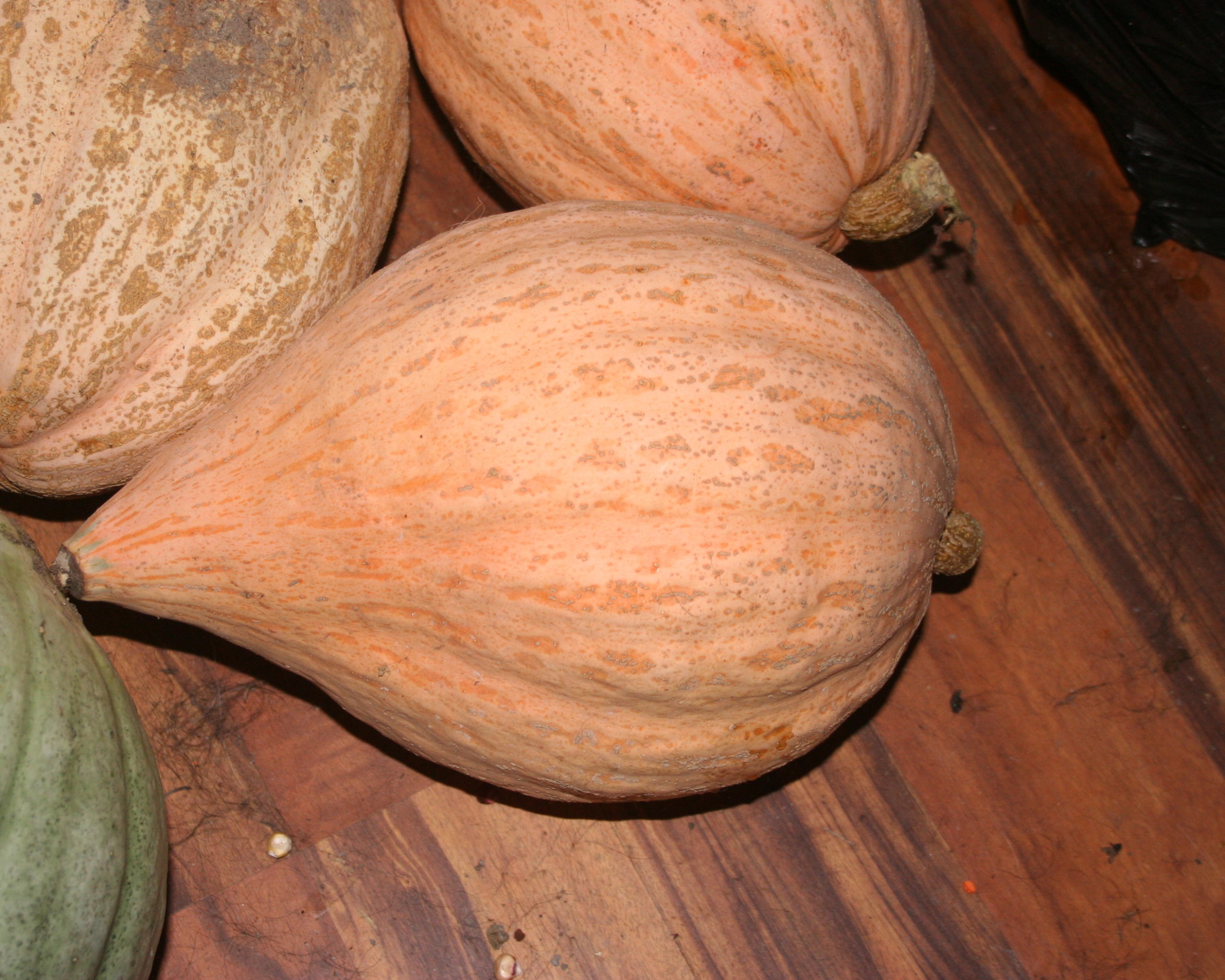
Sweet Fall
Sweet Fall Donated to Seed Savers Exchange in 1998 by Ortha and Wallace Broeker of Nebraska. Wallace remembers his uncle Rob growing this variety back in the 1930s. This Hubbard type squash has teardrop-shaped fruit and attractive salmon and blue-green skin. Fruits average 4 lbs. and are very sweet. We found it to be very productive too. 100 days.

Sweet Meat
Sweet Meat You’ll love this medium sized, pumpkin shaped greyish squash with wonderfully sweet flesh. It sure beats bland acorn squash (which we DON’T carry!) all hollow. Very prolific and a great storage squash too. 100 Days
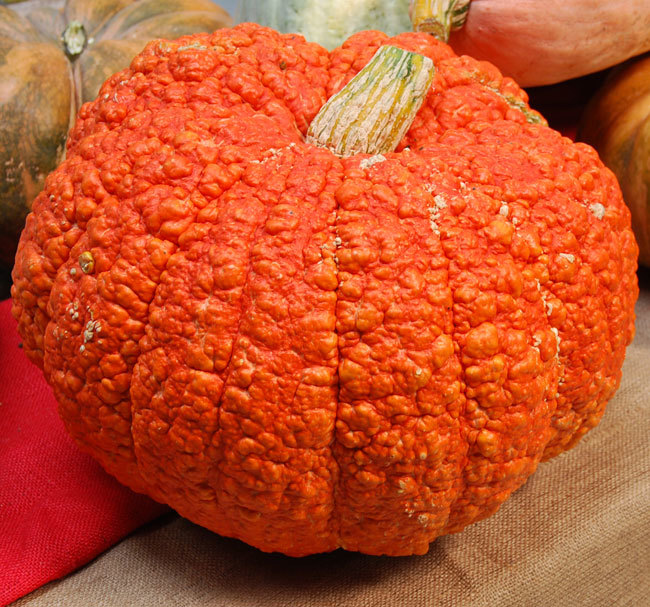 Victor (Warty Red Thing)
Victor (Warty Red Thing)
Victor (aka Warty Red Thing) Victor is an heirloom squash that has recently been re-named to attract attention as a fall decoration. But its use is better served as an eating squash or to use in pies. Victor is a bright red-orange larger round squash with a bumpy skin and sturdy stem. Usually weigh from 10-20 pounds. Rampant vines. 100 days

Winter Squash Party Mix Having trouble deciding on what kind of squash you’d like to grow or don’t want a whole pack of several kinds? We’ve put together a mixture of several kinds, from jumbo to smaller, two person sized squash. All are about 100 days to maturity. 20 seeds per pack (All squash, no pumpkins in this mix.)
SQUASH Cucurbita moschata

Canada Crookneck
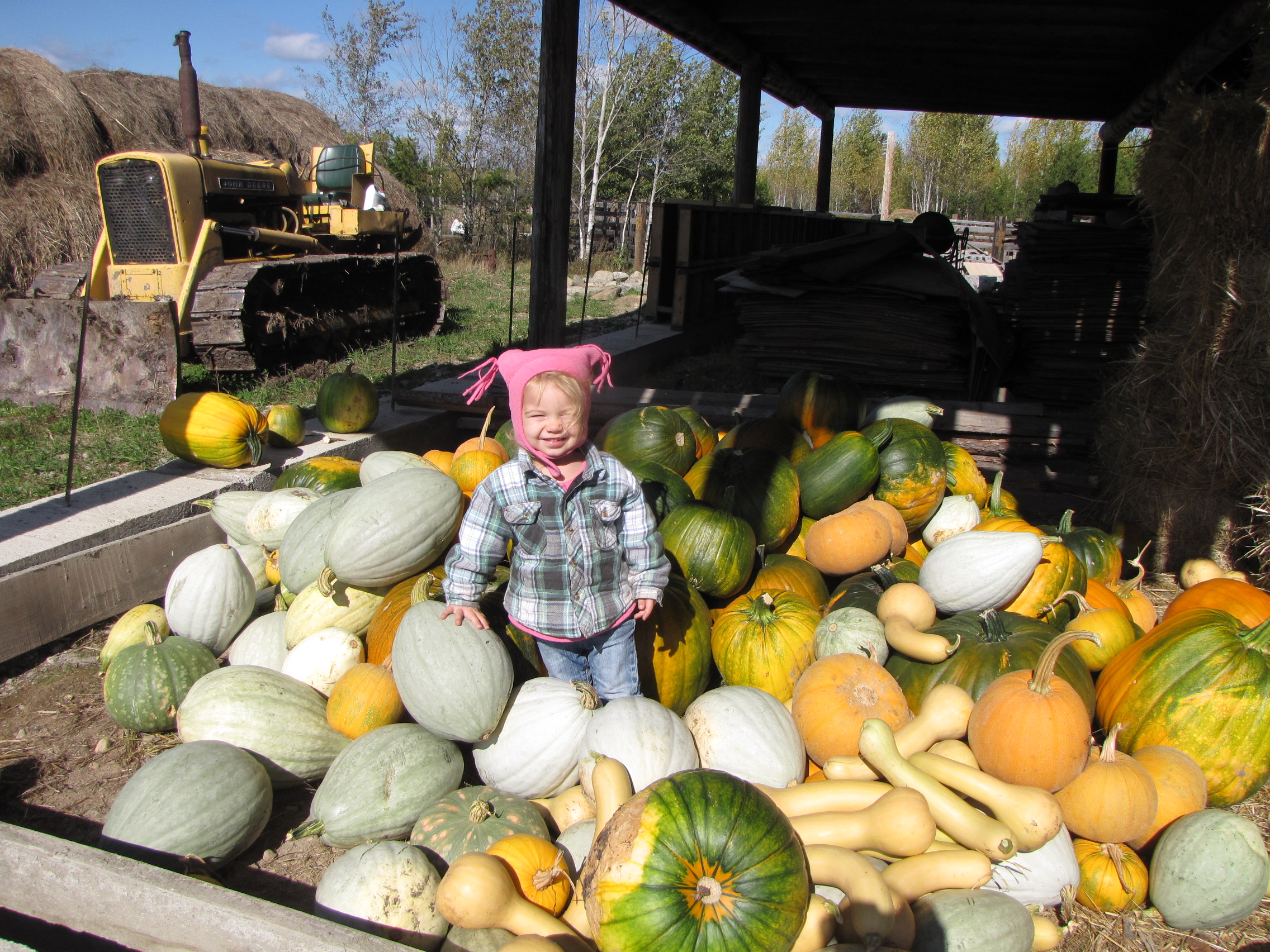
Canada Crookeck (Lower right)
Canada Crookneck This nice, hard skinned, sweet squash is an ancestor of the popular Butternut. But the neck is much longer, being solid meat with no seeds! Just slice the neck and place on a cookie sheet or in a casserole dish. Yummmm. Few seeds in the bulb end so you can eat that too. And it’s early maturing too. Usually weigh between 5-7 pounds. 90 days

Waltham Butternut
Waltham Butternut One of Grandma’s and Mom’s favorite winter squash. Weighing from 4-7 pounds, they are just right for most family dinners. The neck is solid orange meat and there are a few seeds in the “bowl” on the blossom end so you can bake the whole works after removing the seeds. Sweet, tender and long-keeping. 100 days.
SUMMER SQUASH Cucurbita pepo
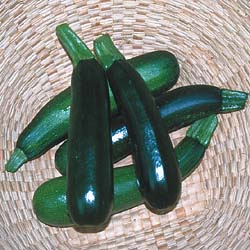
Black Zuccchini
Black Zucchini This old heirloom is a standby for summer gardeners. It is hardy, produces lots of nice, tender, nutty-flavored long squash early and keeps putting them out for the whole summer. We use them in everything from recipes of fried zucchini with onions to fake raspberry jam and everything in between! So versatile and productive. 55 Days

Costata Romanesco
Costata Romanesco This wonderful summer squash from the 1600’s is our very favorite summer squash. It is hugely productive and has a great nutty flavor. Its ribbed surface is so pretty, and the sliced squash have pretty star shapes. 60 days

Ingot
Ingot We are very impressed with both the taste and production of this early bush type, straight-neck summer squash. It came in quite early and set lots and lots of tasty, tender, nutty flavored baby squash in mid-July from a direct seeding. It even kept well into the late fall, indoors. I used lots in stir-frys and sliced to fry up with onions and garlic. 60 days
SQUASH Cucurbita moschata


Canada Crookeck (Lower right)
Canada Crookneck This nice, hard skinned, sweet squash is an ancestor of the popular Butternut. But the neck is much longer, being solid meat with no seeds! Just slice the neck and place on a cookie sheet or in a casserole dish. Yummmm. Few seeds in the bulb end so you can eat that too. And it’s early maturing too. Usually weigh between 5-7 pounds. 90 days

Waltham Butternut
Waltham Butternut One of Grandma’s and Mom’s favorite winter squash. Weighing from 4-7 pounds, they are just right for most family dinners. The neck is solid orange meat and there are a few seeds in the “bowl” on the blossom end so you can bake the whole works after removing the seeds. Sweet, tender and long-keeping. 100 days.


